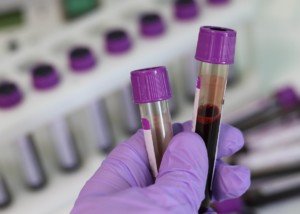
How long should you wait with chest pain before deciding it’s time to visit the ER?
After all, you could be in that 15-30% of patients who end up having a heart attack.
“It’s important to have a pretty low threshold for having chest pain evaluated if it does not have a clear cause, such as injury or unusual exertion,” says Christopher J. Hanifin, PA-C, who was previously a physician assistant in open heart surgery with Cardiothoracic Surgery of South Bend in South Bend, IN.
“Musculoskeletal pain can develop in the chest just like in the rest of the body. For example, the prolonged coughing associated with a cold or the flu can lead to chest pain.”
You have muscles and other soft tissue in your chest. They are not immune from feeling strained or achy after mechanical exertion.
Waiting Time with Chest Pain Before Going to the Emergency Room
“Chest pain in a person with risk factors for cardiovascular disease should be promptly evaluated,” says Hanifin.
“People with a history of high blood pressure, smoking, diabetes, high cholesterol or a family history of heart diseases need to be educated regarding the warning signs of heart attack.
“Another red flag for chest pain is the presence of associated symptoms. The presence of shortness of breath, nausea, sweating or lightheadedness can signal a potentially life-threatening problem and merit prompt evaluation.
“Finally, different types of pathology are frequently characterized by different types of pain.
“Heart attacks and angina are usually associated with a pressure sensation.
“Aortic dissection is associated with a tearing sensation, and inflammation around the heart – pericarditis – is associated with a sharp pain. All of these should be urgently evaluated.”
This means don’t make up some time limit rule. Just get out the door (hopefully someone will be able to drive you to the emergency room).
Study: correlation between how long chest pain lasts and whether or not it’s a heart attack?
Researchers from Henry Ford Hospital decided to investigate. The study notes that about 15 to 30 percent of chest pain cases in the ER turn out to be a heart attack.
The paper points out that an electrocardiogram is “not 100 percent accurate,” though this, and a troponin blood test, are important to ER physicians in evaluating for a possible heart attack.
The study involved 426 patients with chest pain and a 30-day follow-up. Out of that, 38 were diagnosed with a heart attack.
Average duration of chest pain was 120 minutes for them. It was 40 minutes for patients who did not have a heart attack.
For patients who had chest pain for under five minutes, there were no heart attack diagnosis.
Conclusion
The report says that those with chest pain lasting under five minutes “may be evaluated as an outpatient” by a cardiologist.
But if chest pain lasts longer than five minutes and does not have a clear cause (such as diagnosed acid reflux), a person should “seek prompt medical evaluation in an emergency department.”
However, what if only one minute into your chest pain, you also feel nauseous, faint and are breaking into a sweat?
Though these symptoms can be caused by a panic attack (which doesn’t require an emotional trigger), they are far more meaningful within the context of a person at high risk for a heart attack:
- Over age 50
- Obese
- Smoker
- Diabetic
- Sedentary lifestyle
- High sodium diet, among other risk factors
Take things into context. A 60-year-old, nonsmoking, fitness enthusiast of healthy weight and other vitals who regularly runs and lifts weights is more likely having a panic attack than is a 40-year-old, smoking, non-exercising, overweight person whose father had a heart attack at age 42.
This study was small and further investigation is warranted. The full report is in the Sept. 2013 Critical Pathways in Cardiology.
Never think that you’ll be wasting an ER doctor’s time with your chest pain complaint as you try to convince yourself it’s only gas or a strained muscle.
When in doubt, go to the ER, especially if you have risk factors for a heart attack.

 Christopher J. Hanifin
Christopher J. Hanifin







































